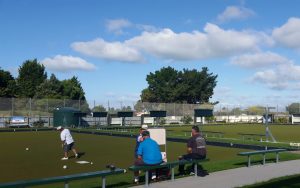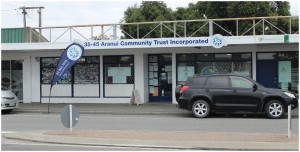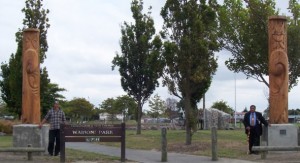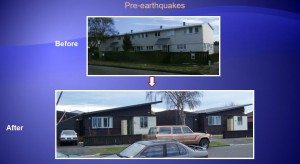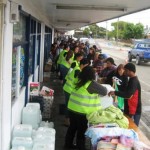Connecting Hearts: The Revitalisation of Coppard Reserve in Leithfield Village
Uniting for a Shared Vision
The journey towards the revitalisation of Coppard Reserve began when the Leithfield Community Centre, initially established to oversee the community hall, evolved into a platform for residents to share ideas and aspirations. Jo Hassall, a driving force behind the community centre, recognised the importance of encouraging locals’ involvement and keeping them well-informed. With each meeting and mailbox run, more residents joined the conversation, and the email list grew to around 70 people.
Early discussions about the park revolved around creating history boards to showcase the heritage of the reserve. The original spark for this idea was from a local primary school pupil, and locals curated the story and graphics for the history boards. Though it took three years to bring the idea to fruition, these efforts sparked a renewed sense of community connection and engagement in the reserve.
From Small Wins to Big Dreams
During these early endeavours, Jo began to envision a more extensive revitalisation of the reserve. Seeking input from the community through mail drops, she received valuable suggestions, including a request for a basketball court and cross trainers that both teenagers and older adults could use. The project required amending the reserve’s management plan, a potentially daunting process, but with Vanessa’s assistance, the public consultation and feedback collection proved successful.
The Power of Community Engagement
Vanessa emphasised that the key to this progress was ensuring that the community were listened to during the consultation period, and that their final submission was well represented.
“We did get stalled a little bit along the way, with our local government operating in a post-covid recovery space it. It was important through the long timeline to stay in touch with the community, keeping them well informed throughout the process.”
Overcoming Challenges and Nurturing Support
It was while progressing through the approval process, that Jo encountered initial scepticism about the availability of grants. Undeterred, she pursued various funding avenues, adopting a “you don’t get if you don’t ask” mindset. This dedication bore fruit when the Rātā Foundation generously funded the entire basketball court and three cross trainers, amounting to $61,500. Jo emphasised that communities should not be deterred by formalities of the application processes and encouraged using plain language.
“It’s important that communities take the first steps towards helping themselves. Councils only have so much money, but if they see your efforts and you ask for guidance through their processes, they are often happy to jump in and help. The process can feel like it takes forever, but this is the time to stick to your guns and rally the community from consultation, through any funding hurdles. Council can give lists of places you can apply to, and also help with funding applications.“
The Transformation and Beyond
With funding secured, the community sprang into action. Volunteers undertook the installation of the basketball hoop and cross trainers, making use of their skills and resources. The removal of hedge to bring in more natural light was huge task undertaken by local residents, in accordance with the Council’s health and safety requirements. The entranceway received a facelift, using soil from the area to create mounds for planting. The transformation of the reserve attracted increased foot traffic, with families and visitors enjoying the new facilities and general ambiance.
Lessons Learned and Sharing the Journey
Jo emphasised the importance of perseverance and patience when collaborating with Councils, as their processes can be time-consuming. She encourages communities to stay the course, maintain open communication, and seek help from the Council when needed. By sharing her experiences and resources with other community groups, Jo supported them to learn by doing, to navigate the application processes and secure funding for their own projects.
A Bright Future and Ongoing Collaboration
Coppard Reserve’s revitalisation journey continues with evolving ideas, such as the potential inclusion of a herb garden, while preserving ample green space. The community’s enthusiasm and dedication has created a vibrant and well-utilised hub, fostering a sense of ownership and connection among residents.
The story of Coppard Reserve’s revitalisation serves as a testament to the power of community-led development, of perseverance, and collaboration. By nurturing a shared vision, seeking support, building connections and using the assets that already exist in their place, Leithfield Village has created a space that reflects its unique heritage and meets the diverse needs of its residents. As other communities embark on their own revitalisation projects, the lessons learned from this journey provide valuable insights and inspiration.
Video: The Heathcote Village Project
10 years on from the tragic earthquakes that struck the Canterbury region, The Heathcote Village Project share their story from the epicentre of the quake, with a focus on the power of community when working from a strengths-based model.
“It’s that shift that is happening at a world-wide level of realising that we are living. Therefore we need to think in more of a living systems way. A dynamic way that allows for emergence and doesn’t go pre-prepared.”
A positive Christchurch community story
Riccarton West used to be a place where “people didn’t meet people… there wasn’t a sense of belonging”, according to one local. After a series of community-led projects in the area, crime stats are down, residents are more connected and people are caring for the environment and the community. Take a look at their awesome video below and if you’d like more information about this initiative, check out Oak Development Trust’s website. Riccarton West Community Documentary from Dan Watson on Vimeo. It’s also been reposted on our YouTube channel here.
The Pūkeko Centre: A shared vision in East Christchurch
The Parklands community in East Christchurch was badly affected by the 2011 earthquakes. This is a story of how two unlikely collaborators came together to create something new for the whole community, using a community-led approach.
After the February 2011 earthquakes, both Parklands Bowling Club and Parklands Rugby Roosters club found themselves without a home. The bowling club’s greens had been ripped apart by the quakes and badly damaged by liquefaction and their pavilion was in a state beyond repair. At the same time, Parklands Roosters Rugby club changed overnight from a sports club to a “welfare club” according to the former Chair, Maurice Lawlor. The club sprang into action to support its members, who were devastated by the quakes. The earthquakes had also caused damage to the Roosters’ base and so, they were looking for a new home as well. Together, the two organisations came up with the idea of creating a new centre that both clubs could use, which could also be opened up to the wider community. This marked the start of a wonderful collaboration by the two clubs to build not only a new clubroom, but a new community centre.
Many people, groups and sectors working together
The process started with a lot of community consultation and some support from other organisations. Lawlor, now the Chair of the Pūkeko Centre Committee, says that Christchurch City Council and the local residents’ association helped the newly formed committee to identify community groups in the area who might be interested in using a new community facility and from this, networking groups were formed, made up of interested individuals, organisations and local businesses. The committee also engaged with the Burwood-Pegasus Community Board on a regular basis and have had a lot of support from Sport Canterbury. Lawlor added that they also had a trade show to which they invited all the community groups. This was an opportunity to “talk about what their needs were and to share our vision”, he says. Lawlor explains that the committee ran an independent capability study which included consulting a wide range of groups. They also engaged an external consultant, who came in to facilitate community discussions around what was needed. The community had input into the name of the centre as well. It was chosen due to the fact that female pūkeko all lay their eggs in the same nest and the eggs and chicks are then nurtured by the whole community.
Using existing strengths and assets
Building a new clubroom was going to be too expensive, so they needed to think outside the square. This resulted in two buildings at the local, closed Freeville School being identified as suitable for the project. They had previously been destined for demolition, but were then gifted to the committee by the Ministry of Education. The buildings were relocated onto the bowling club site, a new foundation was added and a compete refit carried out to turn the building into a modern multi-purpose pavilion. These are now being redeveloped into a multi-sports, recreation and community centre.
Shared local visions drive action and change
The vision was always that the centre would be more than a sports club. Lawlor says that “other groups needed a space. People needed connectivity”. He explains that the idea is that the Pūkeko centre will give community groups a home, allow them to connect, leverage off each other, reduce duplication and grow their own projects. There are a number of groups who are already using the centre and many more that want to set themselves up as regular users, such as Girl Guides, Brownies and health and fitness and senior card groups, plus a number of support networks. Parkview Primary School is located right next door and its Principal, Simon Thomas, says that the clubrooms are currently being used for socialising by the teachers and, in the not-too-distant future, school assemblies will be held at the centre once the hall is built. Parkview doesn’t currently have a big enough space for whole school assemblies, community presentations or other large school gatherings. It may be 5 – 10 years before they can afford to build their own hall so, in the meantime, they are happy to have this arrangement with the Pūkeko Centre. In addition to this, there is an agreement with Sports Canterbury which will allow the school children to start learning to bowl at the club in future. Thomas values the Pūkeko centre as it’s “community driven, has the same vision as the school and there is a great relationship and great community desire” for such a space.
After a lot of hard work, fund raising and help from sponsors, philanthropists, funding bodies and private donors, Stage 1 was completed and was opened by the Mayor of Christchurch, Lianne Dalziel, on 24th February 2018. The clubroom building features a bar, a kitchen, meeting spaces and a free community library corner with comfy couches. The space has lots of natural light and a welcoming feel. Funds still need to be raised for Stage Two, which will result in the opening of the hall (hopefully at the end of this year); Stage Three, which will see a breezeway built and the car parking area finished; and Stage Four, which completes the project with the final landscaping and outdoor court construction.
What will success look like?
The Pūkeko Centre has already achieved a lot, but they have still have so much they want to accomplish for their community. Wayne Eden, a committee member, says that “success will show when we see a vibrant and well-used complex with a reputation for its supportive and welcoming environment. Our very generous sponsors and funders will be able to take pride in the fact that they have contributed to a very valuable community asset.”
Eden concludes by saying “having met and worked with such a large number of community-minded people who have been so generous with their time, support and encouragement along our journey has been totally rewarding and makes it all worthwhile.”
If you’d like to learn more about the Pūkeko Centre, check our their awesome video!
The Pukeko Centre – Our story from Belmont on Vimeo.
Strong relationships matter
By Rachel Fonotia – Manager Aranui Community Trust, 16th August 2016
I work for the Aranui Community Trust – I was born in Aranui, and I’m passionate about the work the Trust is doing. Our vision, “Aranui – a proud community of hope and opportunities where people stand tall – as circumstances demand” is purposefully adaptive so that we can respond to the emerging needs of our people and places. For example the focus after the earthquake in 2011, became to build a better brighter future, after the loss of our houses saw a dramatic decline in our population. We work with communities helping them identify their needs and improve their outcomes.
We’re big on improving access to health, as so many of our people are blocking up the Hospital’s Accident and Emergency with chronic conditions because of the barriers to accessing primary care. We work with education providers to improve our community’s educational outcomes as we have the highest numbers of school leavers exiting the education system without qualifications. Although we don’t concentrate on deprivation it is worth noting our community is amongst the most deprived in New Zealand. Just one example: 70% of our community don’t have communications in the house, so we still have a newsletter that is distributed to all those houses. Overcrowding is also major issue and we work tirelessly with housing providers so people can live in appropriate spaces.
While we have worked on many initiatives with the various agencies one project stands out as an example of how it can work well – and then not so much. In 2001 we entered a three way memorandum of understanding (MOU) with the Christchurch City Council and Housing New Zealand after the ageing two-storey housing stock was identified as the most unpopular, highest need issue in the community. The MOU set out how the three of us would work with the community to redevelop the spaces. The Council agreed to look at the parks and roading, Housing NZ agreed to upgrade its stock.
After the consultation Housing NZ agreed to remove the ageing stock. The community explained to them what they wanted, from single storeys to fencing. Eventually together we came up with the new houses.
Then we had an earthquake and we lost 130 of the remaining outdated stock. We worked with Housing NZ for 2 ½ years to rework what would replace those properties. They came back with a plan which involved building two storey properties again, having not noted the consultation process that had begun in 2001. In terms of design it does not work for the community.
Constantly changing personnel at agency level has been a major challenge. Promises made to keep the community involved and informed are often forgotten. Previous partnering agreements and institutional memory of community housing preferences and plans negotiated with Aranui locals have been ignored – with recently built housing developments representing everything local people said they didn’t want! The need for agencies to meaningfully work with local people and community connectors like Aranui Trust – rather than do for or to Aranui remains a work in progress. And there’s a lot going on – around $150 million is currently being invested in Aranui, ensuring local people are kept up to date with what’s planned is key.
Nobody can do doing anything on their own, we know that and we’ve been pretty smart at getting people to have the conversations at that table. We meet monthly now with the Christchurch City Council – they’ve become our friends. At different times over the 15 years, we’ve had really interesting debates, we’ve fought at the table but we have managed to come away still genuine in the outcome that we are all trying to achieve together.
What would be the point in asking our communities what they wanted and then not help them to achieve it? If we all believe we can make a difference, then we can. Our work is vital for the future of our communities.

